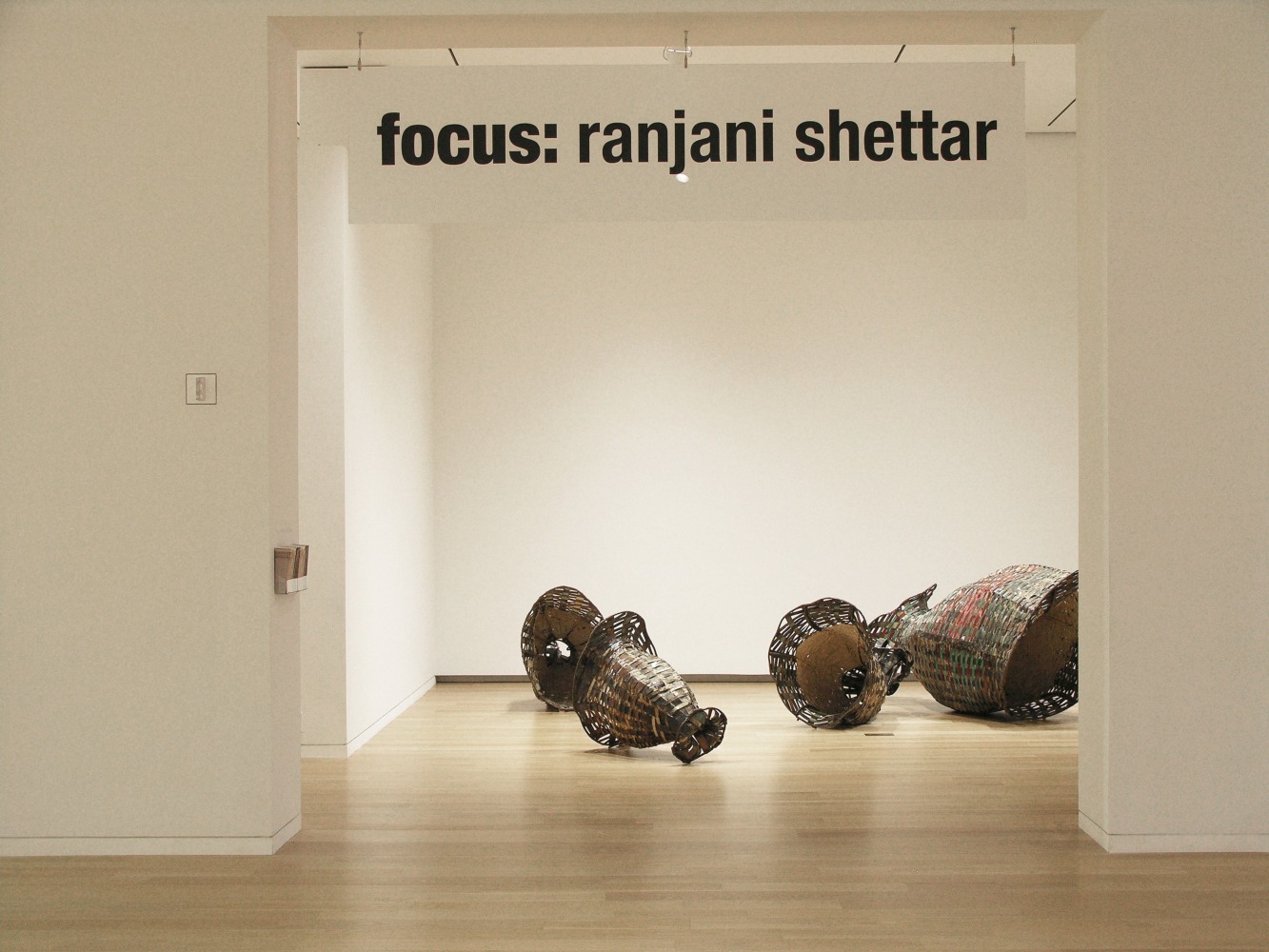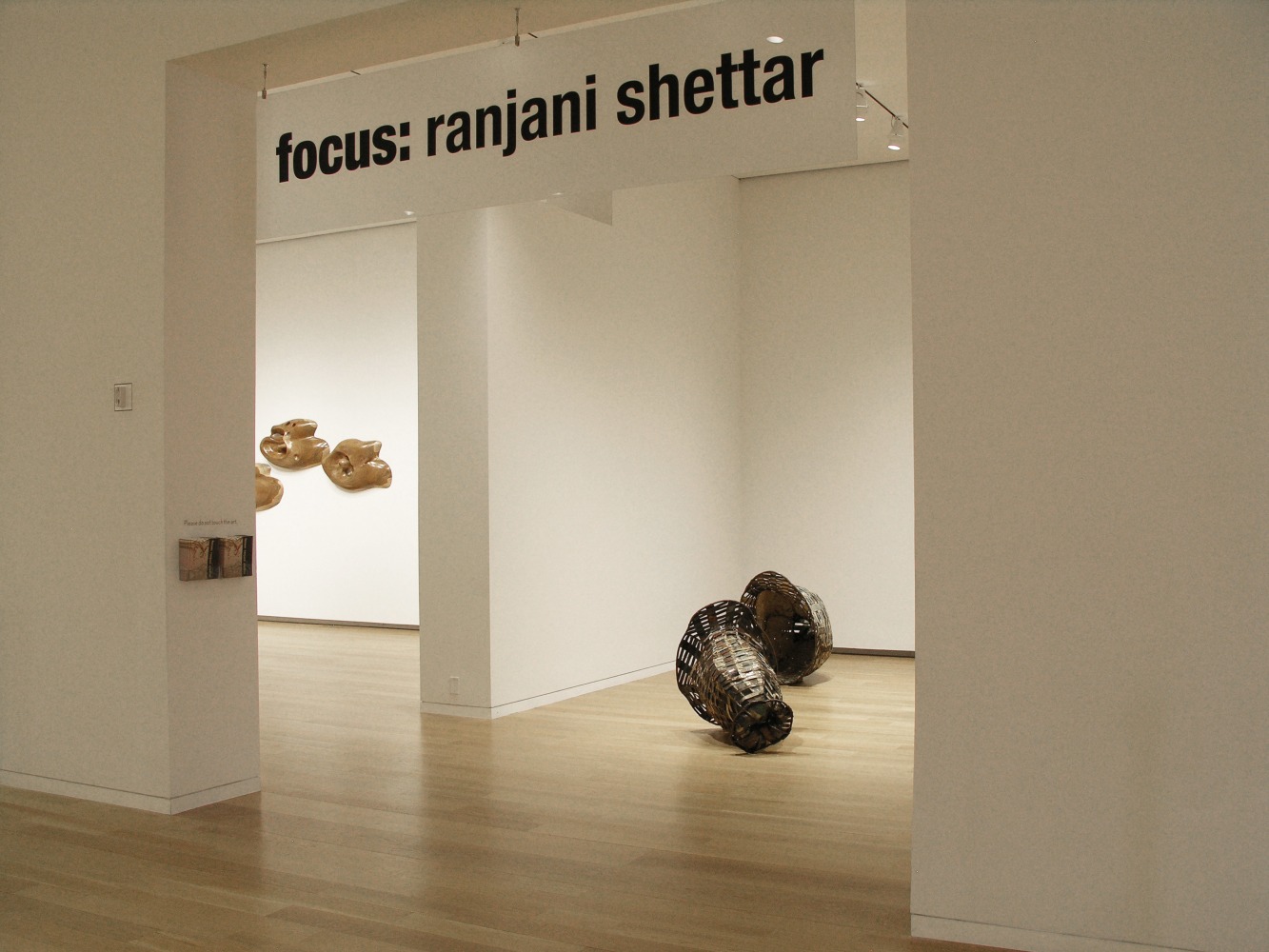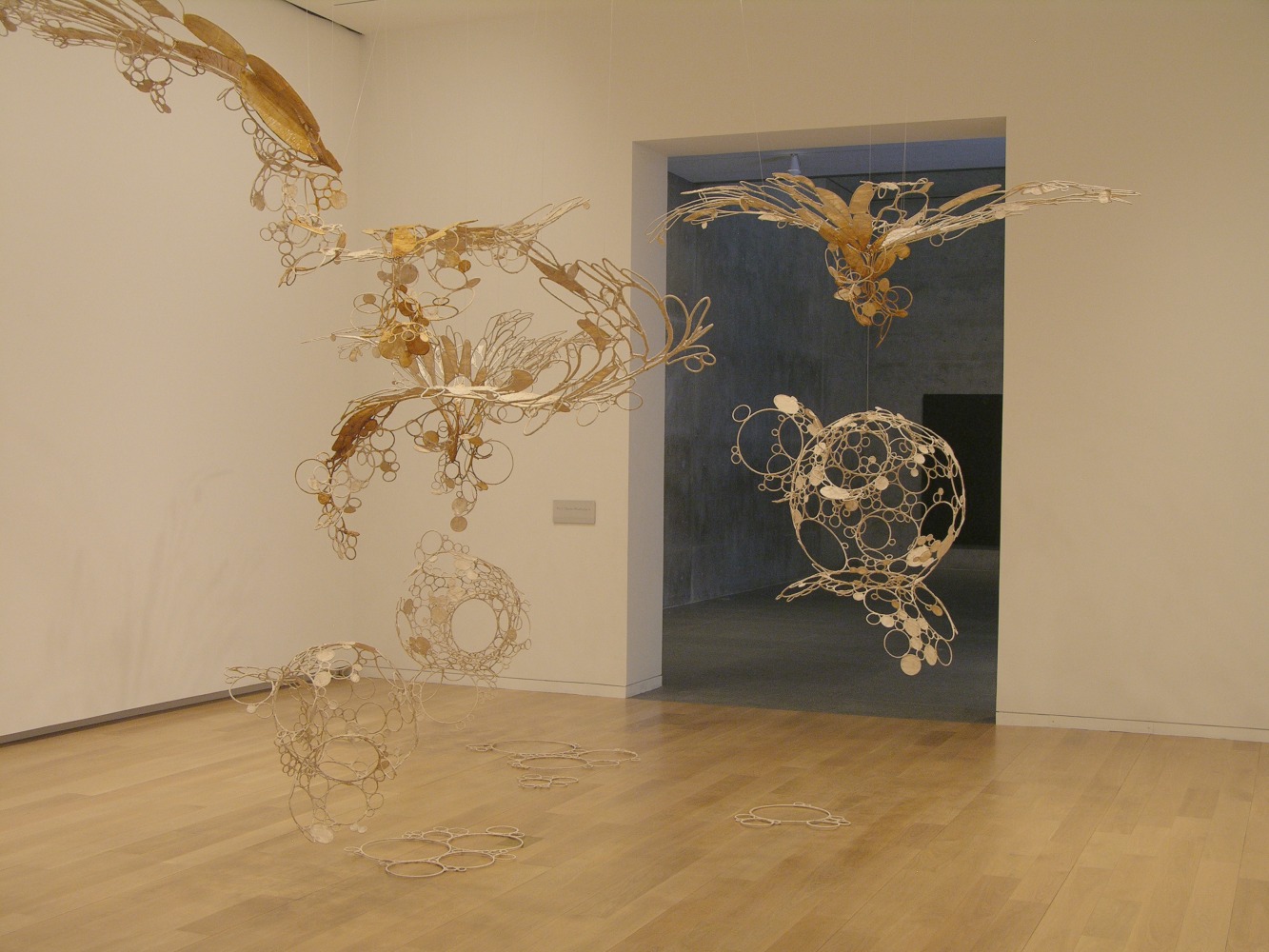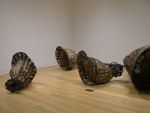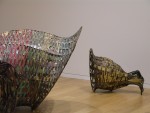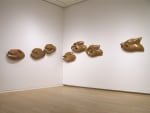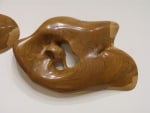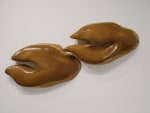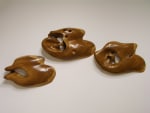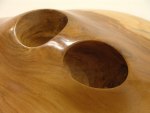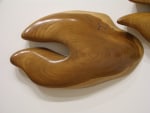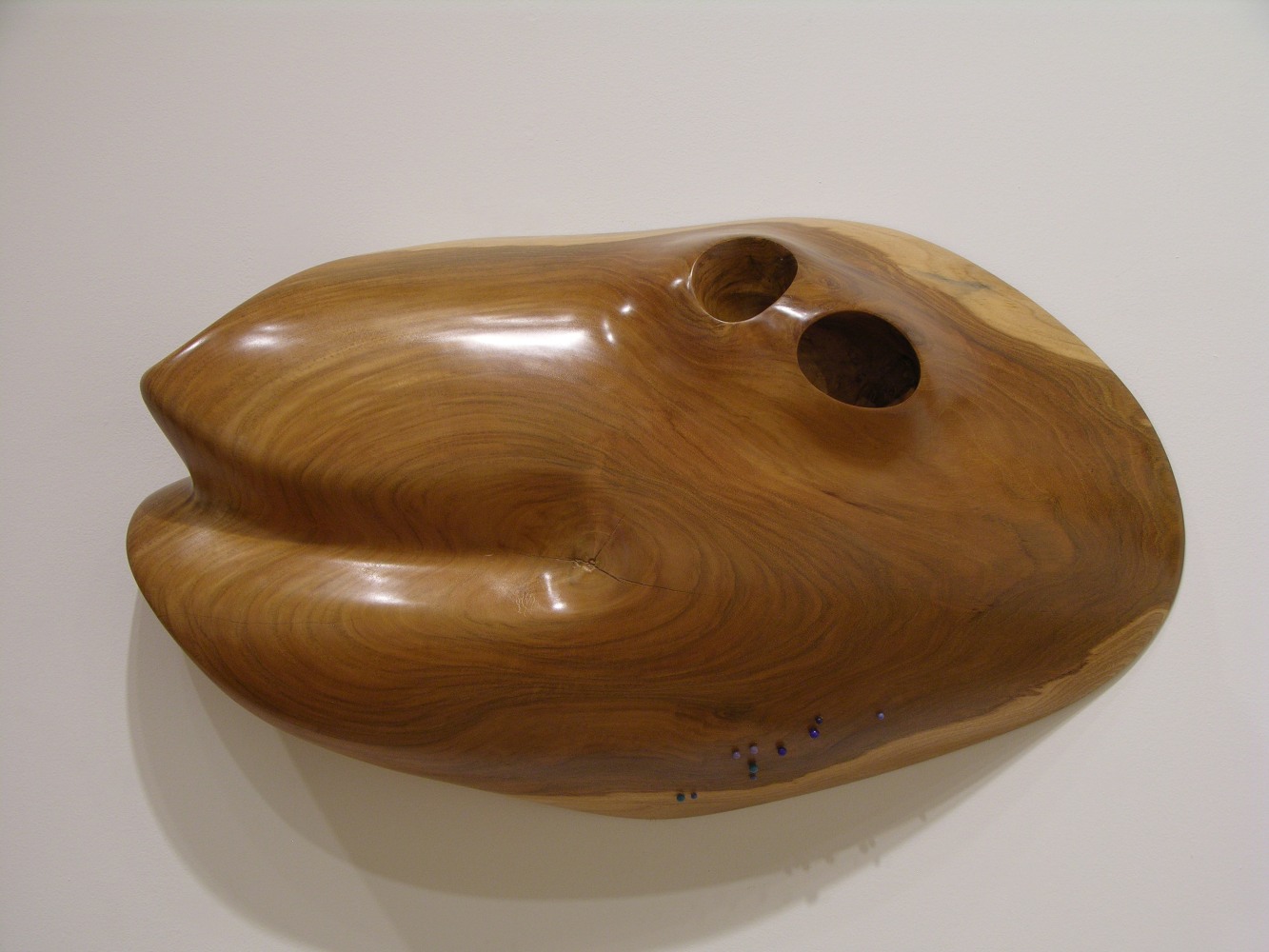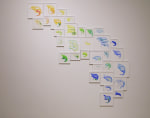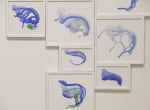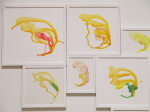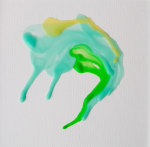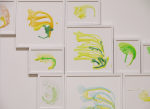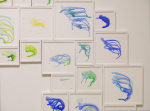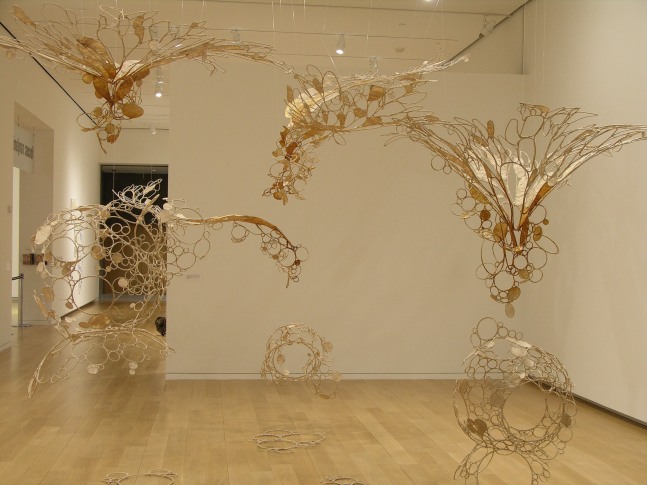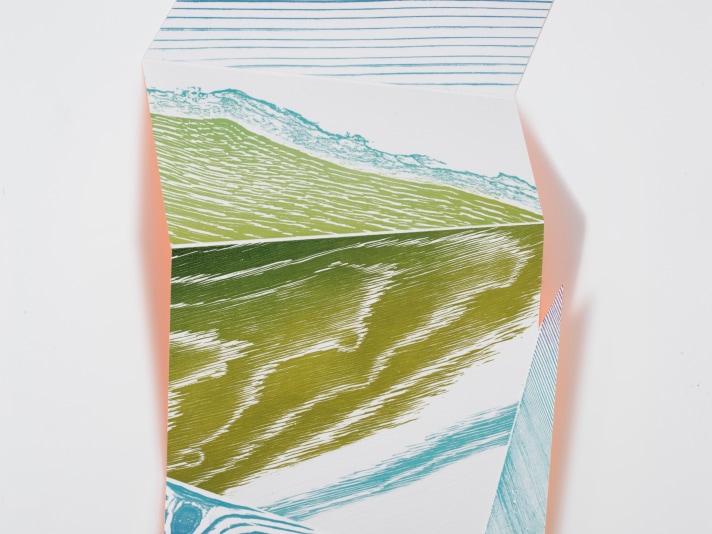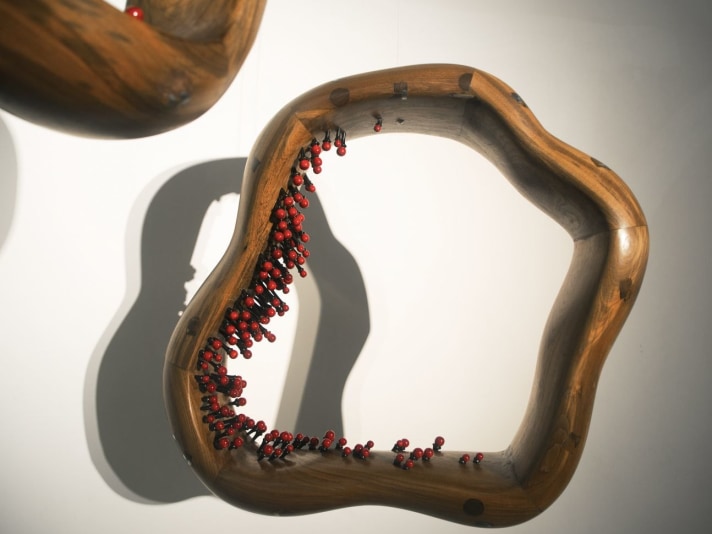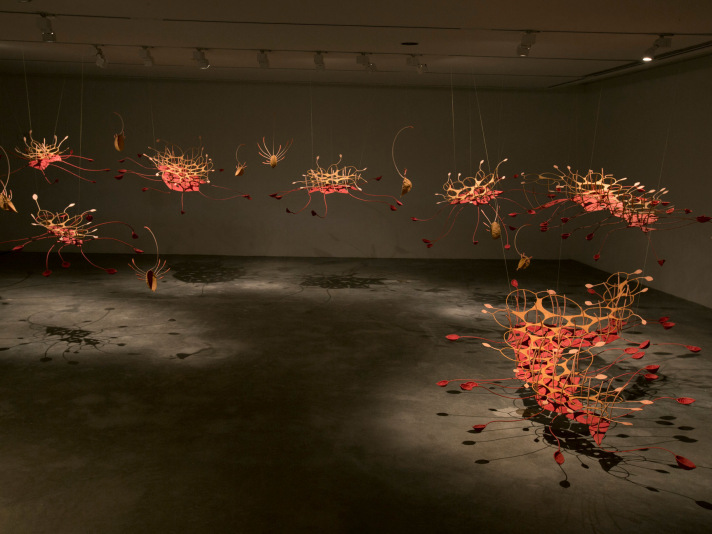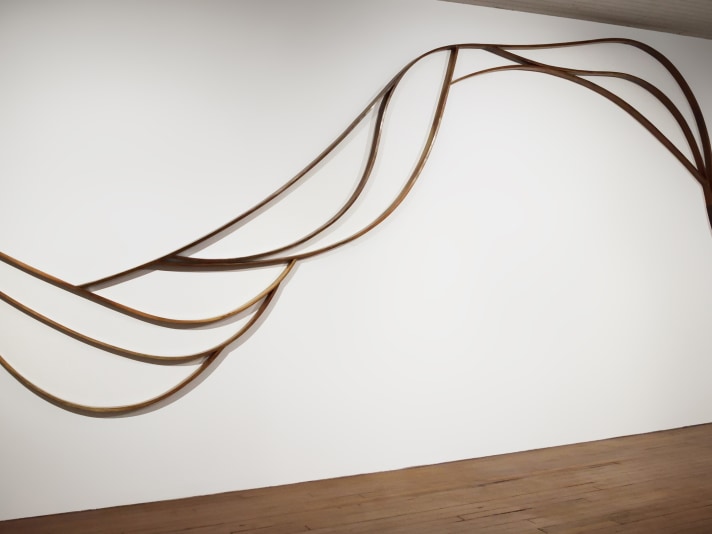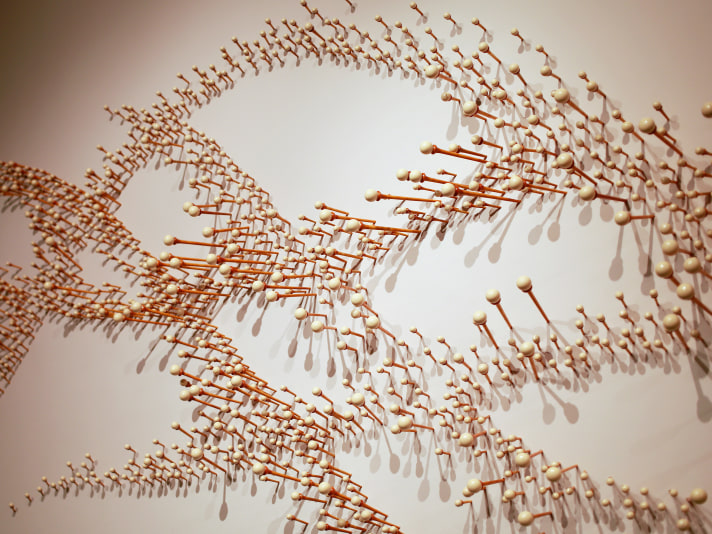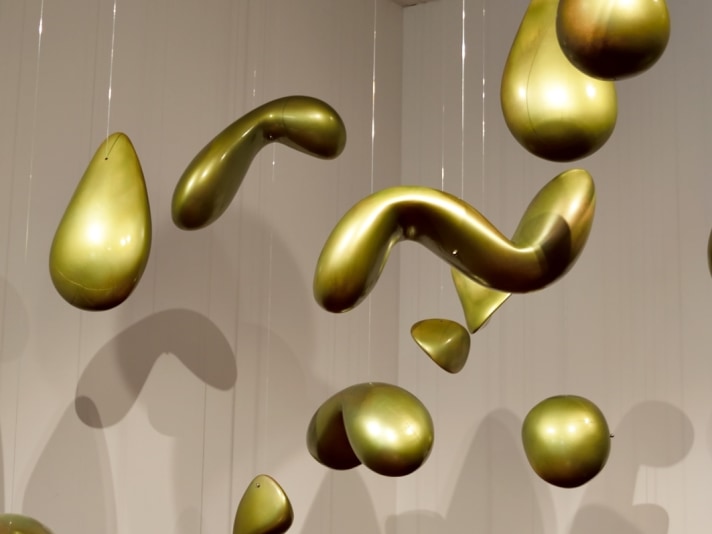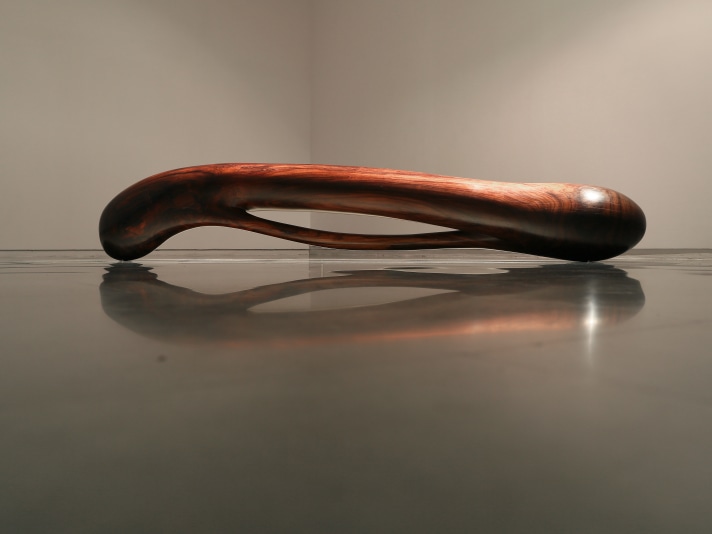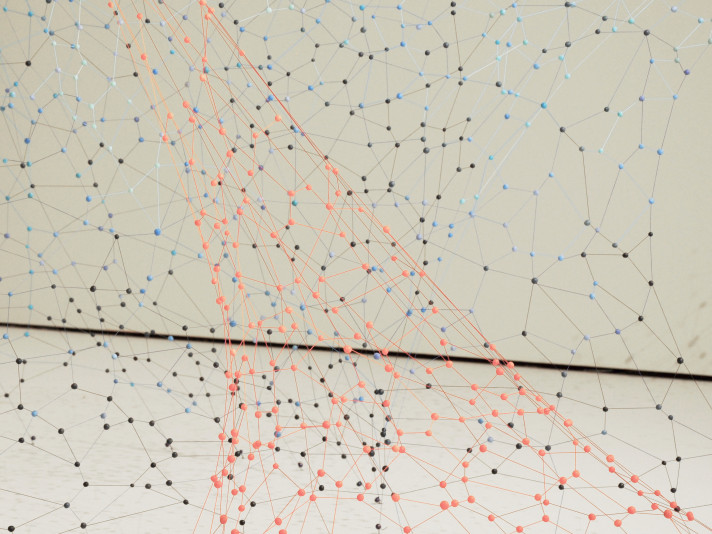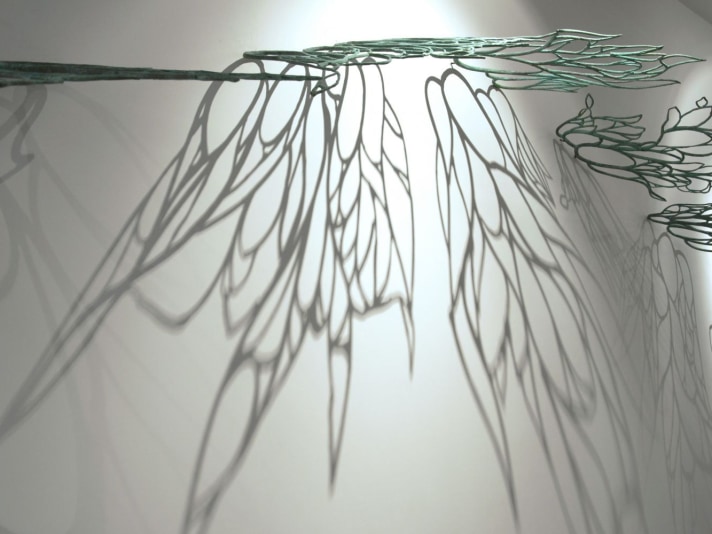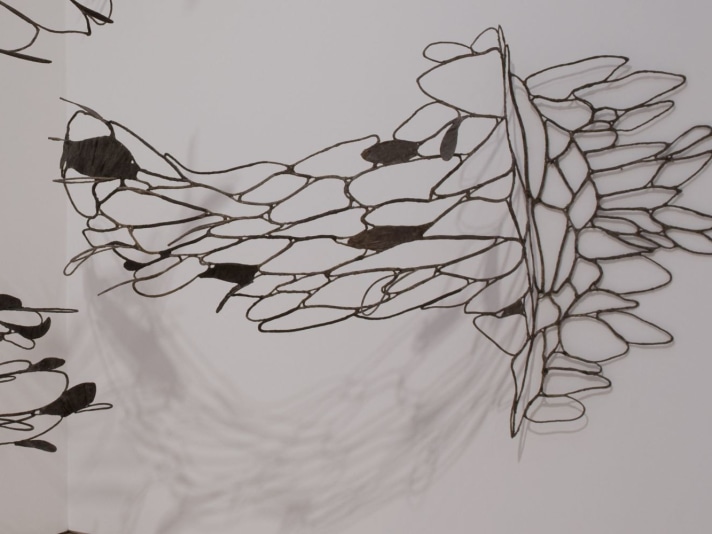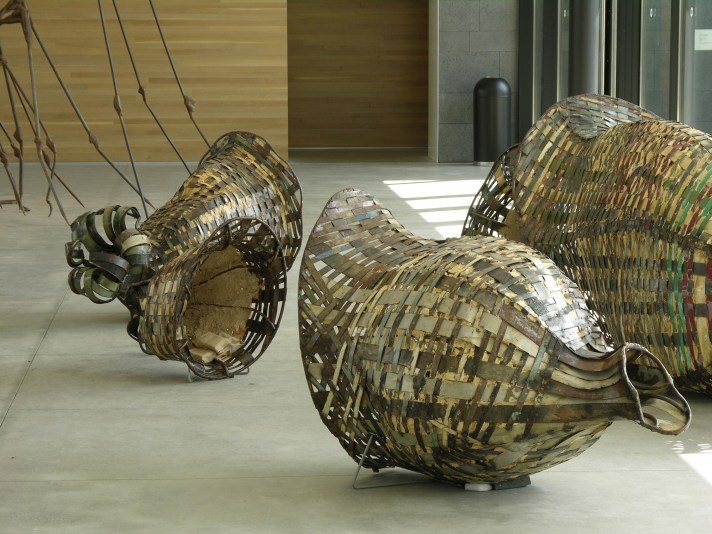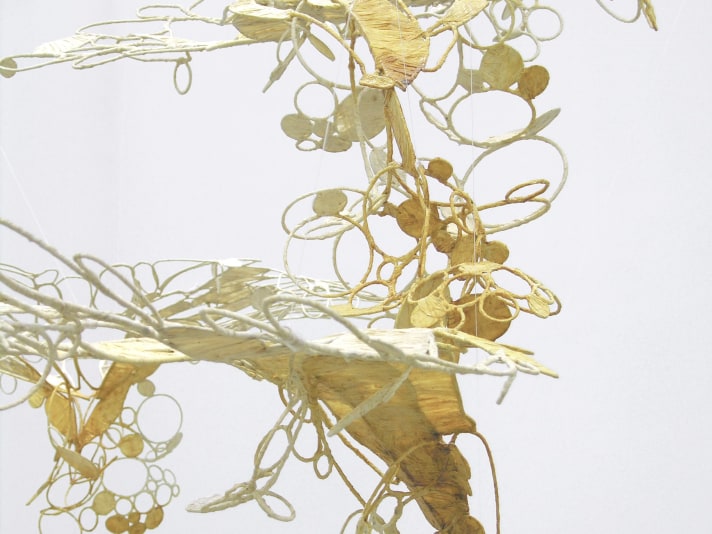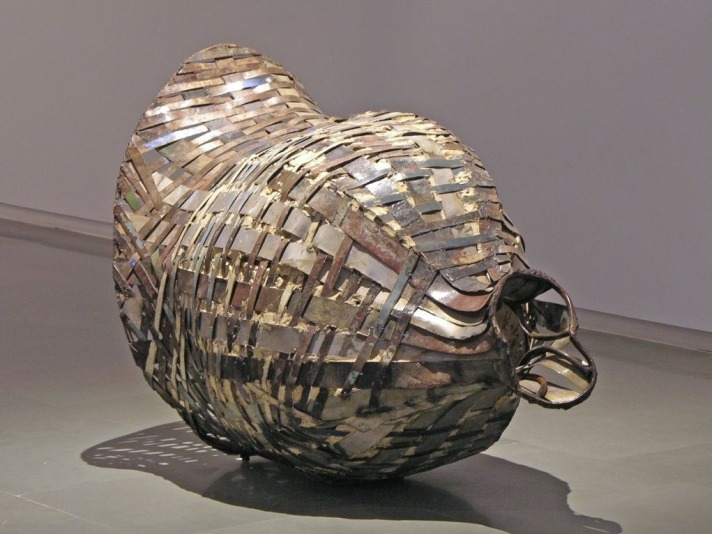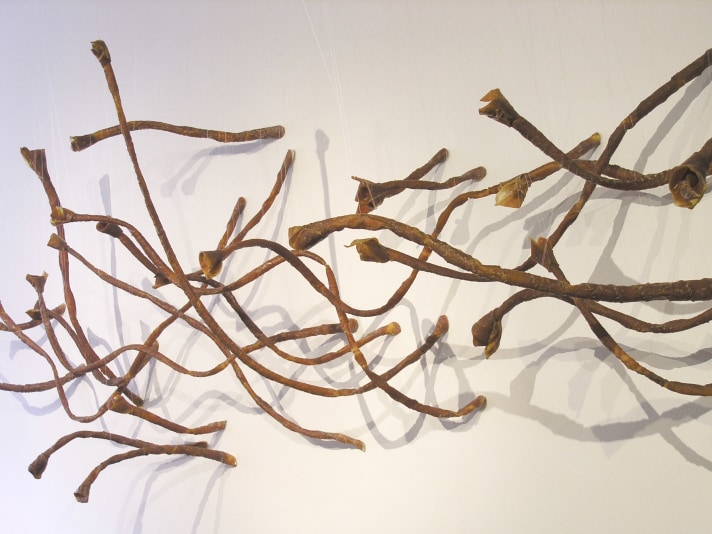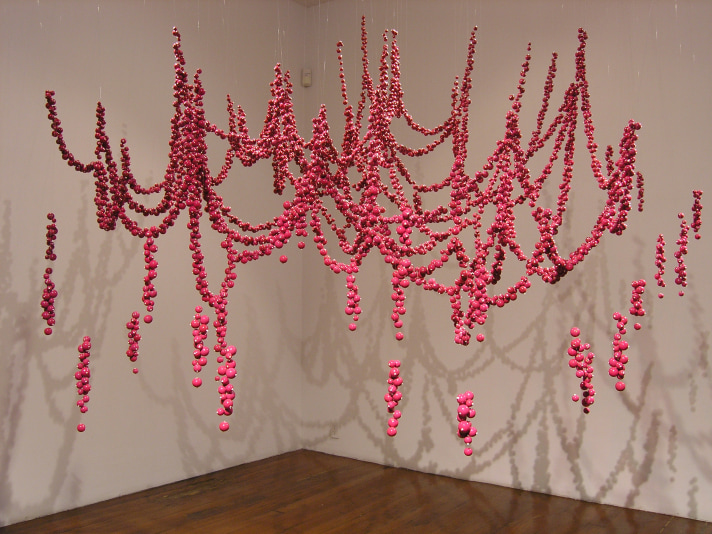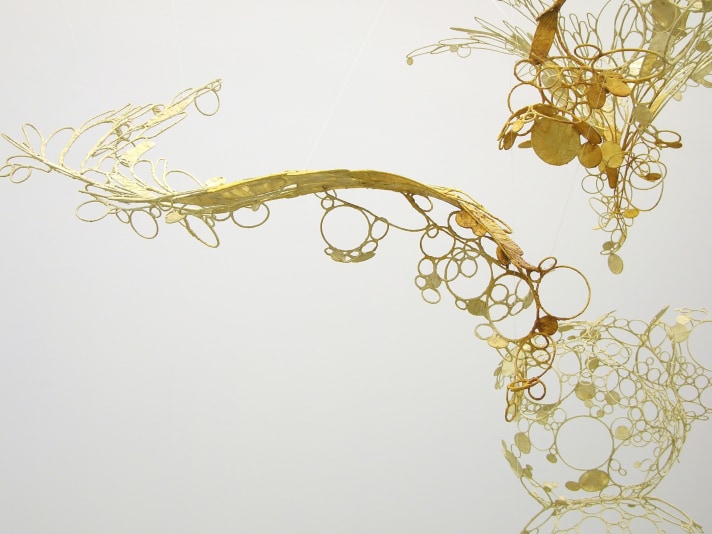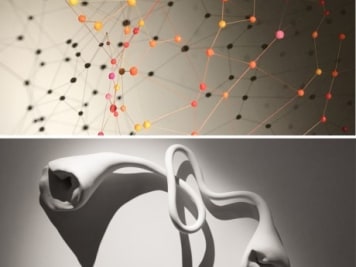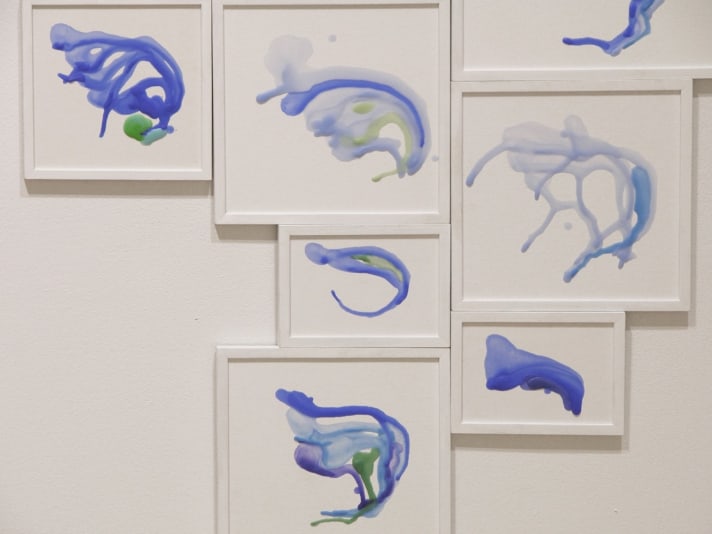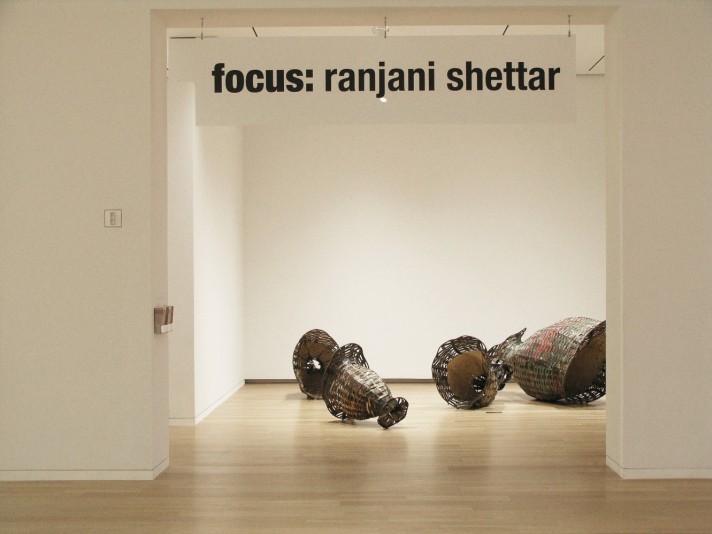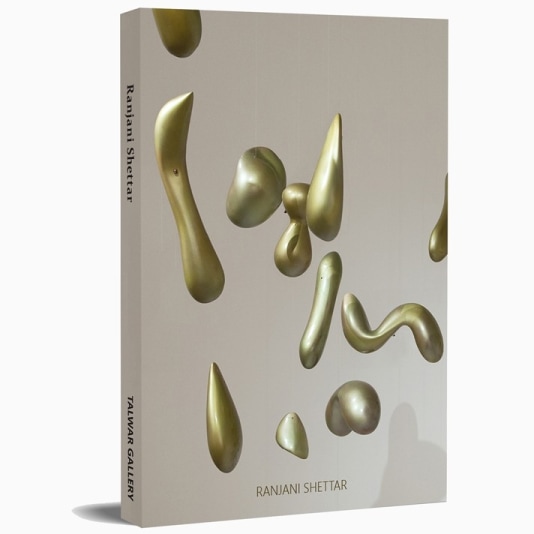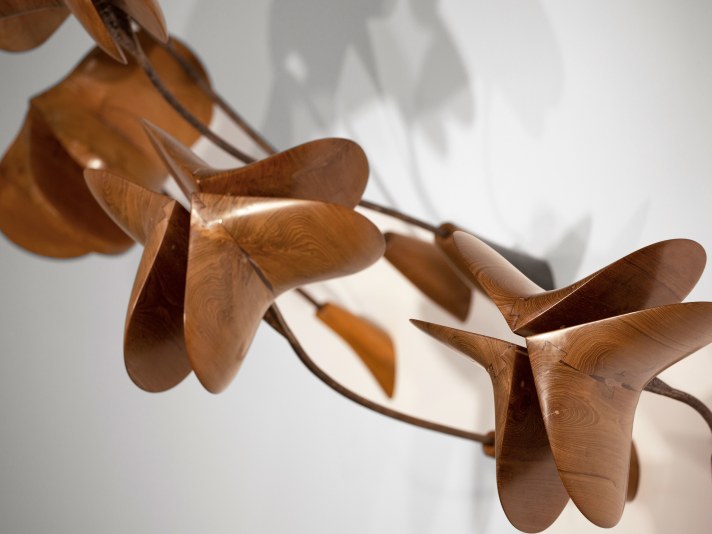
"Evoking sweeping, curving, drooping, and growing organic life forms, but leaving the machined elements exposed, Shettar’s installations investigate the intersections between the natural world and the evolution of humankind."
Andrea Karnes
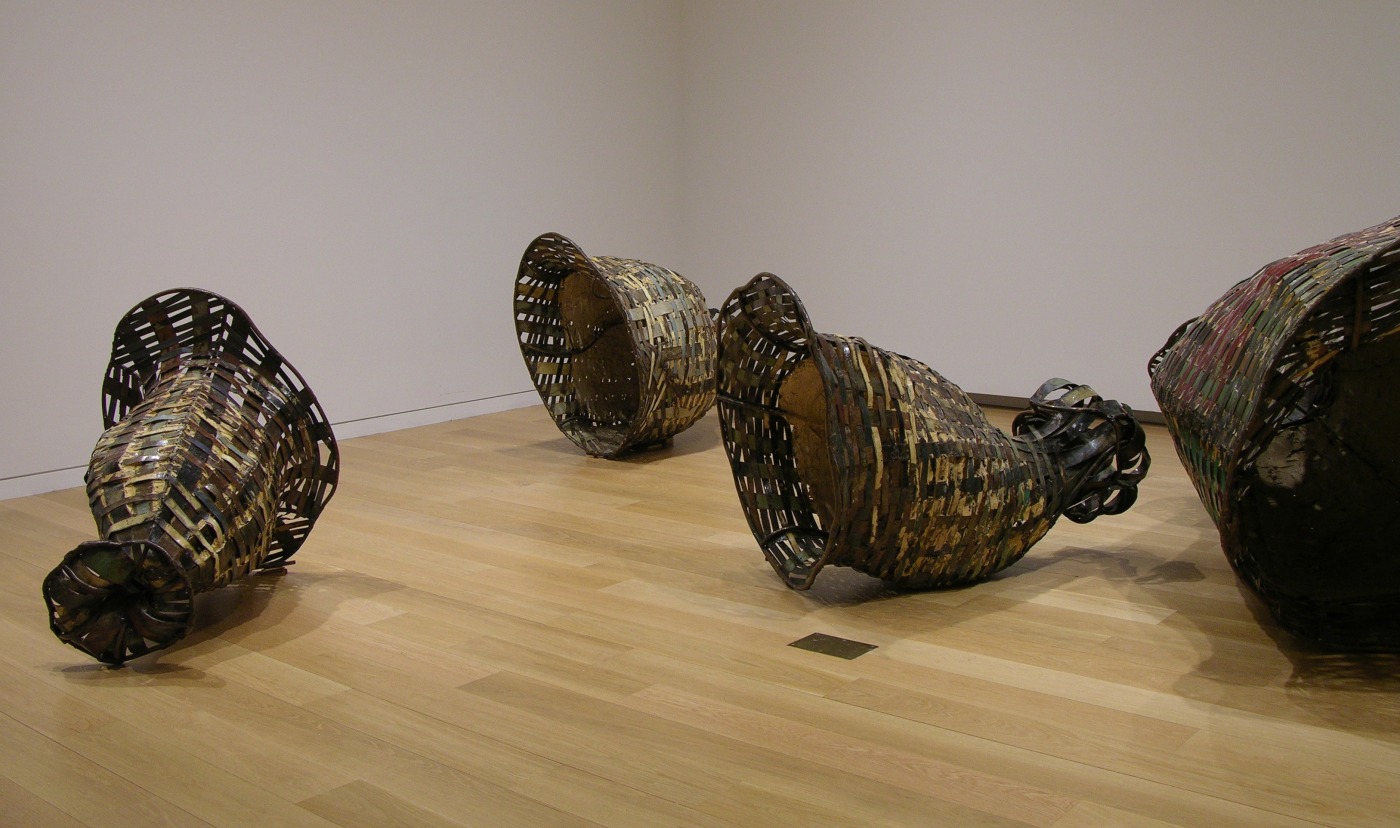
Me, No, Not Me, Buy Me, Eat Me, Wear Me, Have Me, Me, No, Not Me, 2006-2007
Ranjani Shettar creates large-scale, abstract sculpture by combining manmade and natural materials such as wood, beeswax, cloth, thread, rubber, PVC pipe, wire, steel, and beads. Her works, which appear to be as impulsive and random as they are patterned and logical, are frequently arranged as sculptural installations that interact with and articulate the space around them. Evoking sweeping, curving, drooping, and growing organic life forms, but leaving the machined elements exposed, Shettar's installations investigate the intersections between the natural world and the evolution of humankind.
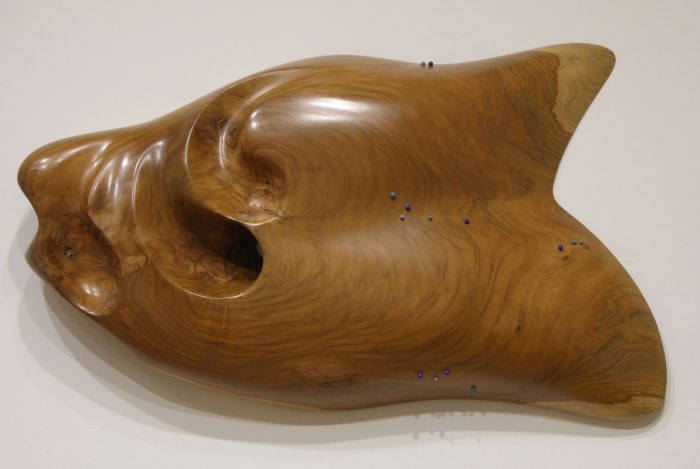
Liquid Walk on my Wall, 2008 (Detail)
Her choice to use industrial materials coupled with the reductive methods she employs connects her to the Minimalists, who favored prefabricated, repetitive forms. Yet, the obvious handmade and labor-intensive quality of the artist's installations relates to her Eastern upbringing. Shettar's work is influenced by her culture: its craftsmanship and use of natural and found materials, as well as its symbolism and philosophy; a philosophy that is grounded in the animate possibilities of all materials.
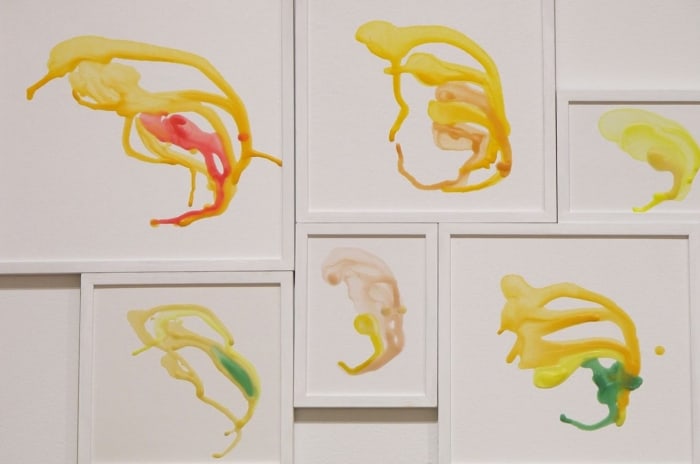
Puddle, 2008 (Detail)
Made with unassuming materials and intensive handwork, Shettar's sculptural installations broaden the scope of our visual field, to include, for example, an image of an invisible atmosphere. Recycling and reworking existing forms, she also underscores the adaptability of materials and their potential for numerous identities throughout one life cycle. Ultimately, however, it is by stripping objects and materials from their predictable contexts and adding elements of humor, philosophy, symbolism, and spirituality, that Shettar elucidates the extraordinary essence of everyday forms.

